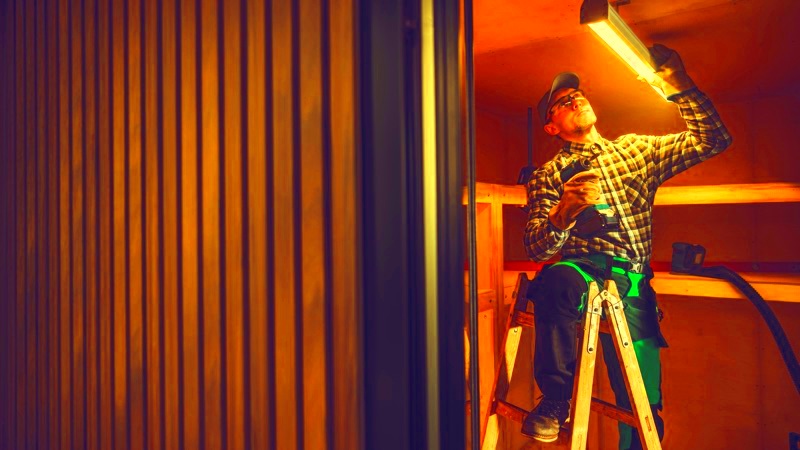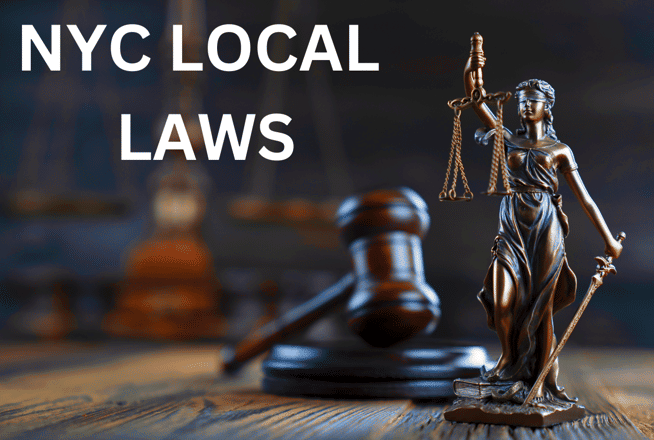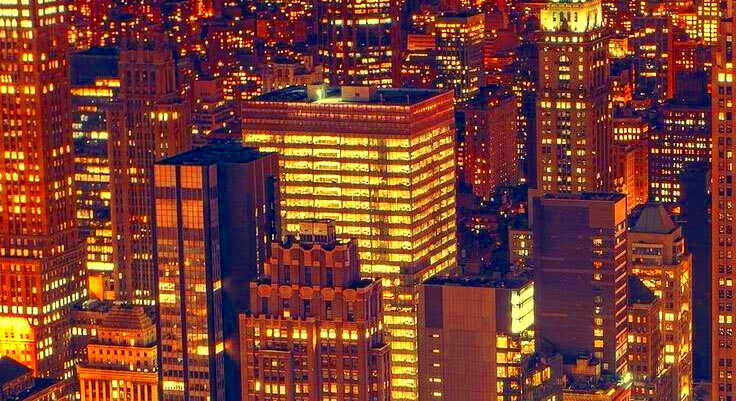Local Law 88 NYC: Key Facts You Should Know
Local Law 88 is part of New York City’s broader efforts to increase energy efficiency and reduce carbon emissions in buildings. Introduced as part of the Greener, Greater Buildings Plan (GGBP), it focuses on upgrading lighting systems and installing submetering for larger buildings. These requirements are designed to help NYC meet its sustainability goals by improving energy consumption in commercial and residential properties. Understanding how this law affects your building is essential for staying compliant and avoiding penalties.
Who Does Local Law 88 Apply To?

Local Law 88 applies to a wide range of properties throughout New York City. The law specifically targets:
- Commercial buildings with over 50,000 square feet
- Residential buildings with over 50,000 square feet
- Two or more buildings on the same lot with a combined total of over 100,000 square feet
This means that if your property meets these criteria, you are required to comply with the provisions of the law. It’s important to note that smaller buildings are not covered under Local Law 88. However, even for eligible buildings, certain areas, such as individual apartment units, might not be subject to specific requirements like lighting upgrades.
The goal of this law is to ensure that large buildings, which typically use more energy, contribute to NYC’s sustainability efforts by adopting more efficient lighting and energy usage practices.
How Local Law 88 Impacts Energy Efficiency in NYC

One of the key components of Local Law 88 is improving energy efficiency through lighting upgrades. By replacing outdated lighting systems with energy-efficient fixtures, buildings can reduce their energy consumption significantly. This not only cuts costs but also helps reduce the city’s overall carbon footprint.
In addition to lighting upgrades, the law mandates the installation of submetering for non-residential tenants. Submetering allows building owners and tenants to track energy usage more precisely, promoting more efficient energy management. Here’s how the law impacts energy efficiency:
- Lighting upgrades: Buildings must upgrade to more energy-efficient lighting systems.
- Energy monitoring: Submetering provides detailed energy usage data, encouraging tenants to reduce consumption.
- Cost savings: Efficient energy use results in lower electricity bills.
Overall, the law is expected to play a significant role in reducing NYC’s greenhouse gas emissions and promoting a greener environment. Buildings that comply with Local Law 88 contribute to making the city more sustainable and energy-efficient for the future.
Requirements for Lighting Upgrades Under Local Law 88

One of the major focuses of Local Law 88 is the requirement to upgrade lighting systems in buildings. This applies to all qualifying properties in New York City, and the goal is to improve energy efficiency by replacing outdated lighting with more efficient alternatives. If your building falls under the law, these upgrades are not optional. Here’s what you need to know about the lighting upgrade requirements:
The law specifically mandates:
- Replacing older lighting systems (typically those installed before 1980) with modern, energy-efficient fixtures
- Ensuring compliance with current New York City Energy Conservation Code (NYCECC) standards
- Upgrading to LED lights or other energy-efficient lighting technologies
- Installing occupancy sensors or automated lighting controls to further reduce energy consumption
To ensure that your building meets these requirements, you may need to work with a licensed professional who can assess the current lighting system and make the necessary upgrades. The scope of work will depend on the size of your building and the type of lighting currently in place. Once the upgrades are completed, building owners must file a report with the Department of Buildings (DOB) to confirm compliance.
Failure to meet the lighting upgrade requirements by the deadline can result in fines or other penalties. It’s crucial to take action early to avoid last-minute rushes or complications.
How to Comply with Local Law 88 by the Deadline
Meeting the deadline for Local Law 88 compliance is essential to avoid penalties. The deadline for lighting upgrades and submetering installations is generally tied to the building’s reporting cycle with the Department of Buildings. To comply, building owners should follow these steps:
- Assess your building: Start by hiring a qualified energy professional to evaluate your current lighting systems and energy usage. This will help determine what changes are needed to meet the law’s requirements.
- Plan the upgrades: Once the assessment is complete, work with your contractor to design an upgrade plan that aligns with Local Law 88’s standards. Focus on lighting systems and, if applicable, submetering.
- Schedule the work: Ensure that all upgrades are completed before the compliance deadline. Depending on the size of your building, this could take time, so plan accordingly.
- File the required documentation: After the upgrades are complete, you must file a report with the Department of Buildings (DOB) certifying that the work meets Local Law 88’s standards. This is a crucial step to avoid penalties.
It’s important to note that the deadline varies depending on your building’s size and occupancy type. Generally, commercial and residential buildings over 50,000 square feet are required to comply. Staying proactive and organized will make the process smoother and help you avoid potential fines.
The Role of Submetering in Local Law 88 Compliance
Submetering is another critical aspect of Local Law 88, specifically aimed at non-residential spaces within large buildings. Submetering involves installing meters that measure individual tenant energy usage, allowing for more accurate billing and encouraging tenants to manage their energy consumption more effectively. Here’s how submetering fits into Local Law 88 compliance:
- Energy accountability: Submetering provides detailed energy consumption data for each tenant, making them more conscious of their usage.
- Improved energy efficiency: When tenants are directly responsible for their energy bills, they are more likely to adopt energy-saving practices.
- Compliance with regulations: All non-residential tenants in buildings over 50,000 square feet must have submeters installed to comply with Local Law 88.
The installation of submeters is often done alongside lighting upgrades, as both are key to reducing overall energy consumption. Submetering ensures that non-residential tenants are billed according to their actual energy use, which can lead to significant cost savings for both building owners and tenants. The data from submeters can also help in future planning, allowing for further energy efficiency improvements.
Proper installation and maintenance of submetering systems are essential, and building owners must keep records of the data generated to demonstrate compliance with the law. By implementing these systems, buildings take an important step toward a greener, more efficient future.
Penalties for Non-Compliance with Local Law 88
Non-compliance with Local Law 88 can result in serious penalties for building owners. The City of New York has put these measures in place to ensure that property owners take the necessary steps to improve energy efficiency. Failing to meet the law’s requirements, such as upgrading lighting systems or installing submetering, can lead to fines and other costly consequences. Here’s what to expect if your building doesn’t comply:
The penalties for non-compliance include:
- Fines: Building owners who miss the compliance deadline may face significant fines. These fines can accumulate until the necessary upgrades are completed and documented with the Department of Buildings (DOB).
- Additional inspections: Non-compliant buildings may be subject to more frequent inspections by the DOB, which can lead to further enforcement actions.
- Impact on building value: A building that does not comply with Local Law 88 could see a drop in market value due to increased operating costs and penalties, making it less attractive to potential buyers or tenants.
It’s essential for property owners to take compliance seriously. Starting the upgrade process early will help avoid delays and prevent penalties from being imposed. In some cases, the costs of non-compliance may far exceed the cost of making the required upgrades, so it’s financially smarter to stay on top of these regulations.
FAQs About Local Law 88 in NYC
Q: What is the deadline for Local Law 88 compliance?
A: The deadline for compliance varies depending on the size and type of your building. For most buildings, the deadline for lighting upgrades and submetering installation is tied to their reporting cycle with the Department of Buildings.
Q: Does Local Law 88 apply to residential buildings?
A: Yes, Local Law 88 applies to residential buildings over 50,000 square feet, though specific requirements such as submetering generally focus on non-residential spaces.
Q: What happens if I miss the compliance deadline?
A: Missing the deadline can result in fines and additional inspections from the Department of Buildings. Non-compliant buildings are also at risk of seeing their property values decrease.
Q: Do I need to hire a professional for the upgrades?
A: Yes, it’s recommended to hire a licensed energy professional or contractor to evaluate your building’s current lighting system and implement the necessary upgrades in compliance with the law.
Conclusion: Why Local Law 88 Is Important for NYC’s Future
Local Law 88 plays a vital role in New York City’s effort to reduce carbon emissions and improve overall energy efficiency. By mandating lighting upgrades and the installation of submetering systems, the law ensures that larger buildings operate in a more sustainable and cost-efficient manner. These improvements benefit not only individual property owners but also the city as a whole by contributing to a greener environment.
Buildings that comply with Local Law 88 help NYC move closer to its ambitious energy goals. Over time, the impact of this law will lead to lower energy consumption, reduced greenhouse gas emissions, and a healthier city for all residents. The long-term financial savings for building owners also make it a smart investment. In the end, Local Law 88 isn’t just a regulatory requirement—it’s a significant step toward a more sustainable future for New York City.


